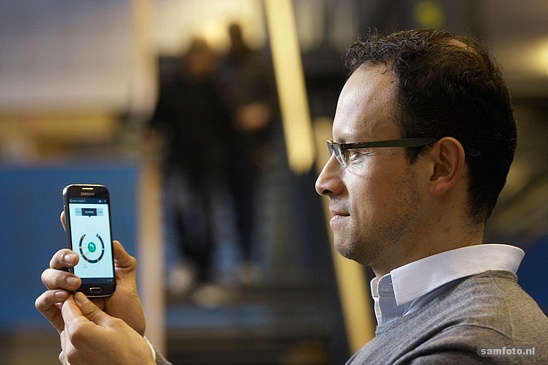No one is closer to you than your smartphone. Ph.D. student Juan Jimenez Garcia explored how it might help you recover after surgery or live more healthily.
Computer applications aiming to activate office workers can be quite annoying. They pop up unexpectedly persuading you to do some exercises just when you’re in a creative wave. That’s not what Juan Jimenez Garcia MSc means when he talks about supportive technology.
Persuasive technology pushes and nudges you towards a preset goal. Supportive technology, on the other hand, needs you to be aware of your present situation in relationship to your personal target. This more subtle technology runs from knowledge and awareness via reflection to activation. So how does that work in practice?
A master student that Jimenez supervised developed a supportive technology program with men dealing with the process of diagnosis and treatment of prostate cancer. The men were asked by a tablet to share their daily life experiences related to the treatment. Their tablet showed men their personal progress and how well they were doing compared to anonymous others and enabled them to exchange tips.
Members from another patient group (who received total hip replacement) where equipped with a sensor to record their movement. It was interesting to see that their reports with the application combined with physical activity sensors could raise the flag for a nurse to make a house call. “We saw vulnerable patients emerging from the system,” says Jimenez. “It has the potential of indicating who needs care mostly.”
This application was not developed further, partly because Jimenez wanted to make the supportive technology more objective.
In order to collect his data ‘in the wild’, Jimenez had to deal with technological hiccups as flat batteries, faulty wireless communication and interrupted datastreams. Also, a large number of elderly patients were plagued by other illnesses or repeated surgeries so that they retreated from the survey.
For Jimenez, the correlation between reported mood and the amount of physical activity was most interesting part. The patients in the study told him: ‘you know more about my health experience than my doctor.’ They were glad to share their experiences, albeit in a typed report.
After two weeks, when hip-patients fared better, the habit of giving feedback four times a day wore off. Jimenez says that when the system detects more movement, you might assume the patient is recovering. The system may adapt and then reduce the frequency of self-reflections.
Jimenez will continue developing supportive technology after the presentation of his Ph.D. research. As a postdoc researcher at the faculty of Industrial Design and Engineering, he will develop the same supportive technology towards energy consumption behavior at home.
–> Juan Jimenez Garcia, Beyond the numbers – an integrated patient-centred approach to design supportive personal systems for healthcare technology, Ph.D. thesis supervisor (name professor), 17 December 2014.



Comments are closed.